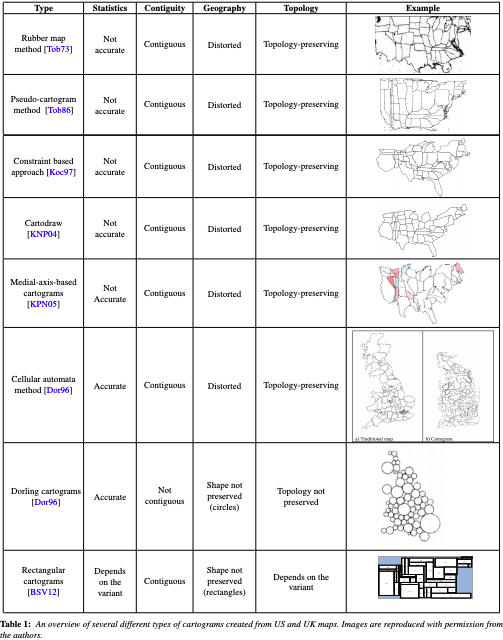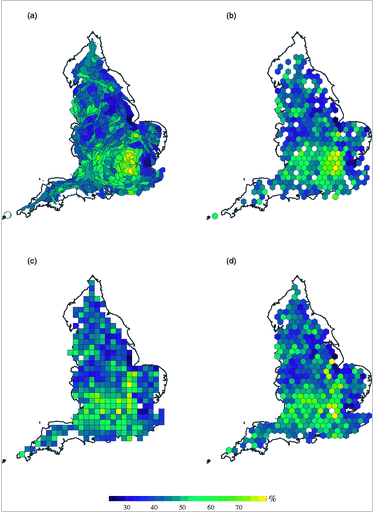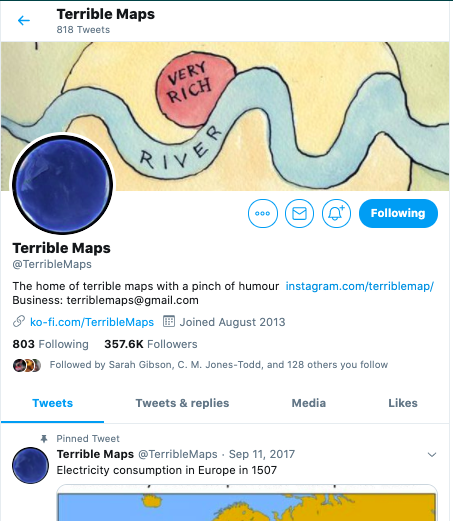Even beautiful maps can be misleading
How decisions about spatial data visualisation affect map legibility
Sam Langton & Réka Solymosi
NSCR & University of Manchester
19/01/2022
Image credit: Andisheh Nouraee
Maps: visual representation of spatial data
Why maps?
Much of human activity happens 'somewhere'
Some are very useful!
Optimal Manchester brewery crawl (see https://www.ncalvert.uk/posts/drunkensalesman/)

But maps can pose issues

Image credit: XKCD
Sometimes bad maps are funny

Key considerations
Key considerations
- What is the intended message?
Key considerations
- What is the intended message?
- How do different maps convey this message?
Two key fields
Two key fields
- cartography

Two key fields
- cartography

- (non-spatial) data visualisation

Image credit: Wikimedia commons)
Empirical understanding of how people perceive different "viz"
Example 1: Pie charts
Example 2: Tufte charts
Example 2: Tufte charts

Examples in cartography
Examples in cartography

Image credit: Flannery, JJ (1971) The relative effectiveness of some common graduated point symbols in the presentation of quantitative data
Addressing a specific problem: variation in the size and shape of areas
Eg: USA States

Eg: UK Local Authorities

Message often obscured

A fix: distort polygons


How does this affect perception?
Our focus: EU referendum results

4 types of distortions

(a) Balanced cartogram
From Harris, R (2017) Hexograms: Better maps of area based data.
Scale by min value to balance invisibility and distortion
(a) Balanced cartogram
From Harris, R (2017) Hexograms: Better maps of area based data.
Scale by min value to balance invisibility and distortion
Eg if SIU is 0.02 inches on a 5inch map:
siu <- 0.02 # the smallest interpretable unitheight <- 5bb <- sp::bbox(map)width <- (bb[1,2] - bb[1,1]) / (bb[2,2] - bb[2,1]) * heightbbA <- (bb[1,2] - bb[1,1]) * (bb[2,2] - bb[2, 1])mapA <- rgeos::gArea(map)minA <- (siu * bbA) / (height * width)map$scaleby <- rgeos::gArea(map, byid = TRUE)map$scaleby[map$scaleby < minA] <- minA# Use this to scale cartogrambalcarto <- cartogram::cartogram(map, "scaleby", maxSizeError = 1.1, prepare = "none")
(b) Hexogram
- same idea as balanced carto, with minimum value being what allows each area to be represented as its own hexagon
(b) Hexogram
same idea as balanced carto, with minimum value being what allows each area to be represented as its own hexagon
hexagons are produced using the hexagonal binning function in R’s fMultivar package, based on the centroids of each polygon
(b) Hexogram
same idea as balanced carto, with minimum value being what allows each area to be represented as its own hexagon
hexagons are produced using the hexagonal binning function in R’s fMultivar package, based on the centroids of each polygon
our example:
# Get the function neededscript <- RCurl::getURL("https://raw.githubusercontent.com/profrichharris/Rhexogram/master/functions.R")eval(parse(text = script))# Number of bins guided by the -binN- function for a visual plot.# 29 is also used by Harris in example.harris.29 <- hexogram(LAE.sp, 29)# Extract the hexogramsharris.29.hex.sp <- harris.29[[2]] # 2 is hexo
(c) geogrid squre grid
From Joseph Bailey
Calculates a grid that strives to preserve the original geography.
(c) geogrid squre grid
From Joseph Bailey
Calculates a grid that strives to preserve the original geography.
2 steps to using this
1 - Generate grid by varying the seed
2 - Efficiently calculate the assignments from the original geography to the new geography
(c) geogrid squre grid
From Joseph Bailey
Calculates a grid that strives to preserve the original geography.
2 steps to using this
1 - Generate grid by varying the seed
2 - Efficiently calculate the assignments from the original geography to the new geography
Our example:
# step 1 generate gridLAE.reg <- calculate_grid(shape = LAE.sp, grid_type = "regular", seed = 1) #1 was our fave seed# step 2 calculate assignmentsLAE.reg <- assign_polygons(LAE.sp, LAE.reg)
(d) geogrid hexagonal grid
- Same idea as with grids but for hexagons:
# step 1 generate gridLAE.hex <- calculate_grid(shape = LAE.sp, grid_type = "hexagonal", seed = 1)# step 2 calculate assignmentsLAE.hex <- assign_polygons(LAE.sp, LAE.hex)
"High values (in yellow) appear to be clustered near one another, with a handful of outliers elsewhere in the country"
"High values (in yellow) appear to be clustered near one another, with a handful of outliers elsewhere in the country"
- 5-point Likert scale (strongly agree, slightly agree, neither agree nor disagree, slightly disagree, strongly disagree).
"High values (in yellow) appear to be clustered near one another, with a handful of outliers elsewhere in the country"
- 5-point Likert scale (strongly agree, slightly agree, neither agree nor disagree, slightly disagree, strongly disagree).
- Higher agreement = better representation of statement in map
"High values (in yellow) appear to be clustered near one another, with a handful of outliers elsewhere in the country"
- 5-point Likert scale (strongly agree, slightly agree, neither agree nor disagree, slightly disagree, strongly disagree).
Higher agreement = better representation of statement in map
Convenience sample (internet) of 768 respondents
Results

Results (contd.)

Conclusions
New methods to visualise geographic information can convey a message more accurately than original thematic maps.
But choose the method with consideration to the research question and the data!
Crime Mapping
Forthcoming textbook based on our UoM Crime Mapping module:
Thanks!
These slides: https://rekadata.net/talks/mod_presentation.html
Questions? Contact Réka (@r_solymosi) or Sam (@sh_langton)
- Slides created via the R package xaringan. The chakra comes from remark.js, knitr, and R Markdown.





